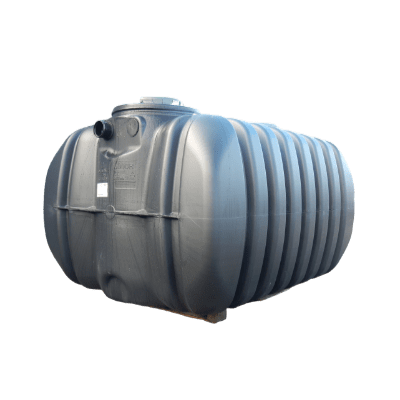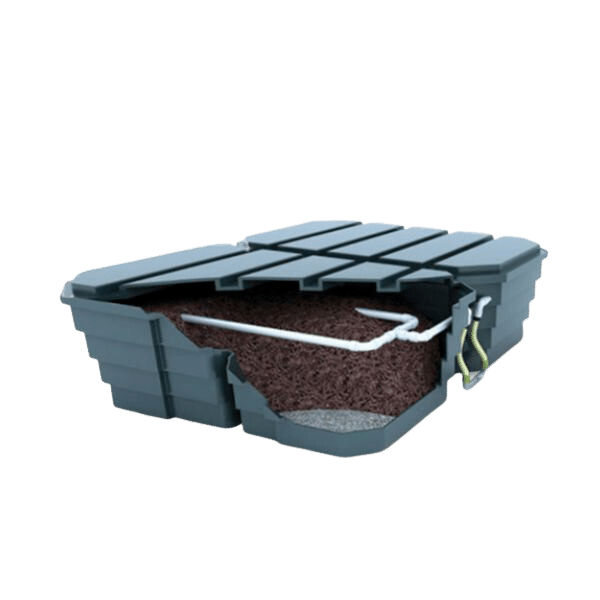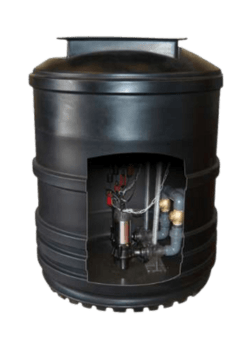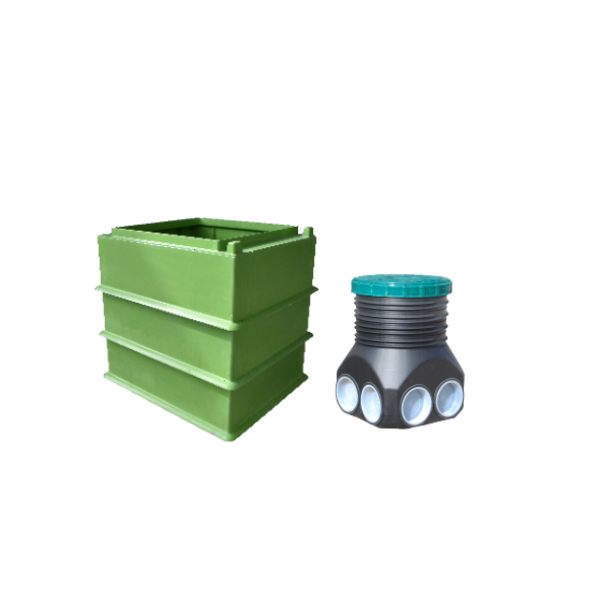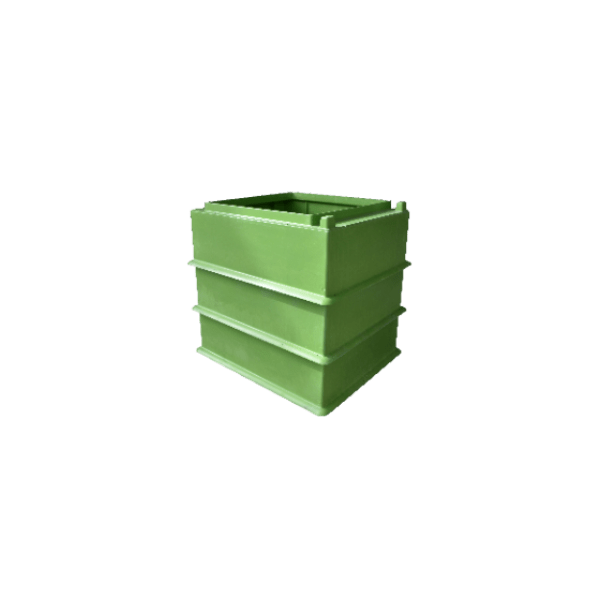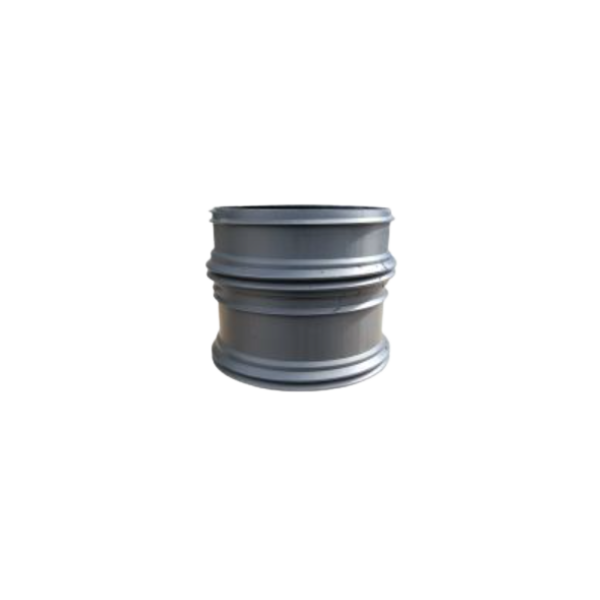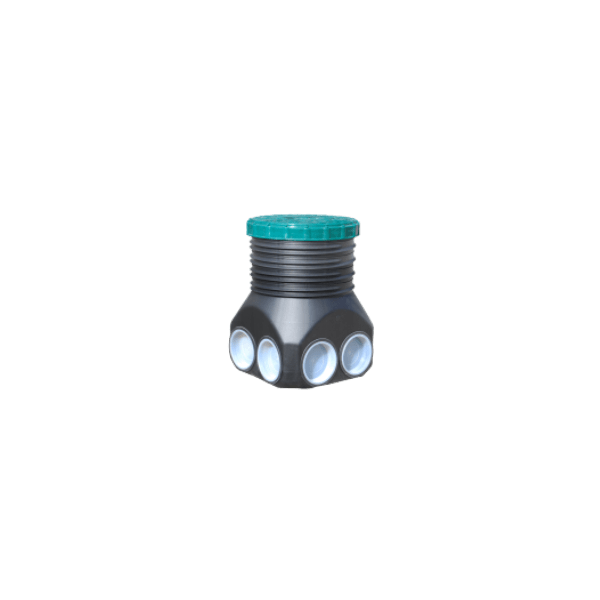SEWAGE TREATMENT
Domestic Sewage Treatment Plant Process
OVERVIEW
When people investigate wastewater treatment, one common question is, “How does work the domestic sewage treatment plant process?
Introduction :
Domestic sewage treatment plants are designed to treat and clean your wastewater using the innovative fixed bed process that allows the bacteria to grow and degrade the pollution from the effluents.
The fixed bed is powered by oxygen that is supplied via the compressor. It requires less energy to run than a lightbulb, keeping costs minimal. The Tricel Novo is a ready-to-install sewage treatment plant.
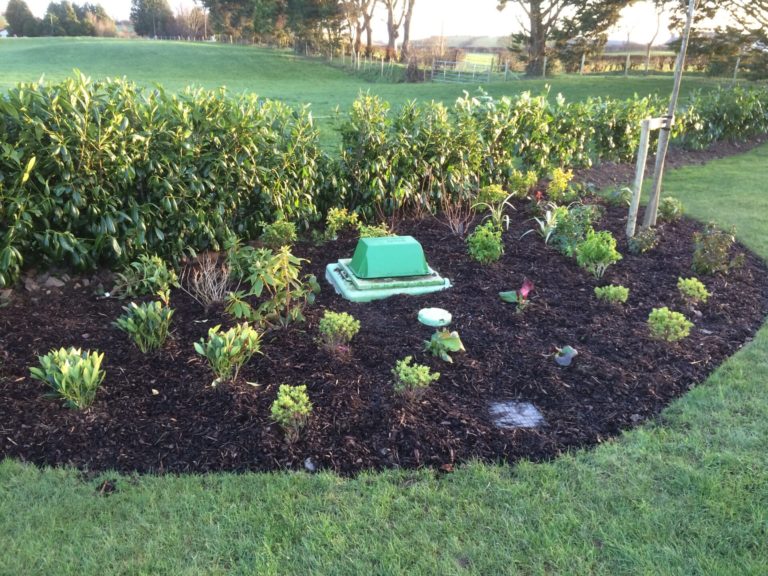
If you have any questions, feel free to call us
VISIT OUR VIRTUAL SHOWROOM
What is the process of a domestic sewage treatment plant?
This type of wastewater treatment application is known for its excellent purification performance and positive behaviour with load variations. Load variations can be particularly interesting when choosing a system for a holiday home, B&B or house that must consider seasonal factors.
Thanks to the automated process built in, the Tricel Novo system can self-treat load issues. This regulating process consists of a bacterial bed and a sludge recirculation system.
By developing a self-regulating wastewater treatment plant, end-users no longer have to worry about factors such as extended periods of underload, seasonal overloads or even periods of no load. This innovative system ensures that no matter the use frequency, the bacteria that break down the wastewater will not degrade. Thus, the treated effluent will always be sufficiently high quality and can be discharged to a local stream or river.
Tricel Novo
Tricel Novo wastewater treatment plants are high-quality products designed to be reliable, simple to maintain and easy to install by professionals. They are an excellent alternative to traditional septic tanks. Indeed, after doing a site assessment of your field, you may want to opt for this kind of wastewater treatment plant if you don’t have enough space for a septic tank.
They are considerably more compact with only one treatment unit but equally effective.
However, if you are trying to understand how a domestic sewage treatment plant work, in that case, we must begin to analyse further the individual elements involved in the Tricel Novo system.
What is the process of a domestic sewage treatment plant?
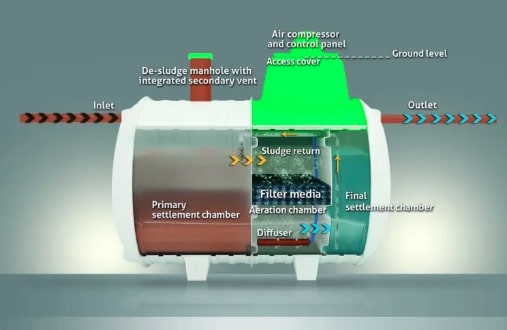
The first thing to examine when trying to understand what interior elements make a domestic sewage treatment plant work, such as the Tricel Novo, is the individual treatment stages of the process.
The primary settling chamber
This settling chamber is the first step in the purification process. In the primary settling chamber, any heavy elements of sludge and effluent are deposited at the bottom of the tank chamber. As a result, the removal of most pollution from the greywater occurs before entering the second phase of the purification process.
This step is only sometimes taken up in free crop operations. It is altered for SBR (sequence batch reactor) stations that combine the first and second purification stages into one.
Aeration phase
The second phase of the process introduces oxygen into the tank. This phase allows the all-important bacteria to grow and develop. The bacterium consumes the harmful waste, and as an organism, it requires oxygen to thrive.
Oxygen is supplied through a small compressor which is extremely energy efficient and has meagre running costs. Therefore, a Tricel Novo is an electric sewage treatment plant without high energy consumption.
Final settling chamber
Finally, as the process nears completion, any residual sludge settles to the bottom of the tank as its mass is denser than water.
This function allows for the final separation of the effluent following the aeration stage and the cleaning work undertaken by the bacteria. Once the final separation is complete, the water purification complies with environmental standards. They can be evacuated from the tank and re-introduced to the natural environment.
All sewage treatment systems manufactured by Tricel are tested and certified for structural strength, water tightness, durability and treatment efficiency, adhering to European Standard EN12566- 3.
Interact with the Domestic Sewage Treatment Plant
How to interact with the tank
- Click on the numbers to see the annotations.
- You can also switch between the treatment process stages (yellow circle at the bottom left-hand corner) and the anatomy of the Novo (green circle at the bottom left-hand corner).
- To view in Virtual Reality (VR), click the square at the top right-hand corner and simply scan the QR code with your phone.
- In order to check the dimensions, click on the spanner icon.
- To download an image of the Novo, click on the camera icon (top right-hand corner)
Tricel Novo: Key features & benefits
The compression moulding process is one of the most technologically advanced features available on the market. Components are manufactured under heat and high pressure. They have a competitive strength and durability over standard GRP tanks or PE tanks.
SMC is a unique material in the sewage treatment industry with Tricel SMC tanks operating in some of the harshest climatic conditions for over 50 years with no defects.
Tricel’s ceramic diffuser will last twice as long as all standard competitors rubber equivalents. It is a cost-saver in both call out fees and replacement parts.
No concrete backfill for installation on most sites which allows you to save up to €400 over lower quality GRP/plastic competitors.
There are no moving parts or pumps in the plant which is ensuring reliable operation during the treatment process and minimal running costs.
Tricel Novo plants are designed with a shallow invert to limit both installation and time costs.
Tricel product range
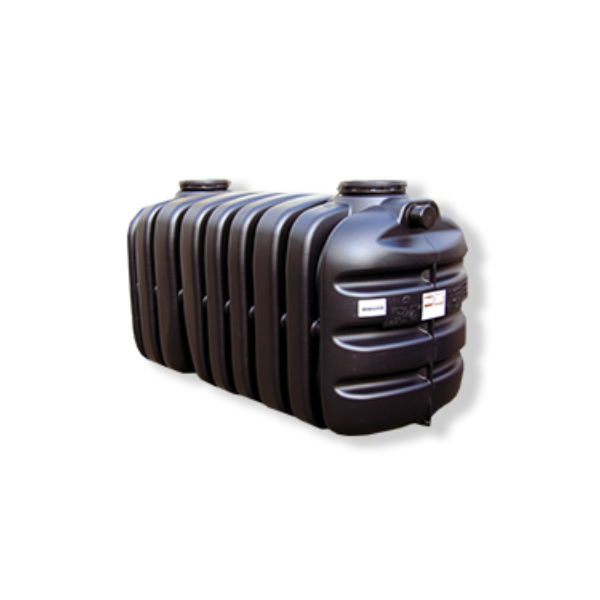
Tricel Vento Septic Tank
Shallow dig tank, strong & robust underground tank, No electrical or moving parts. Ideal for sites with good drainage & plenty of space.
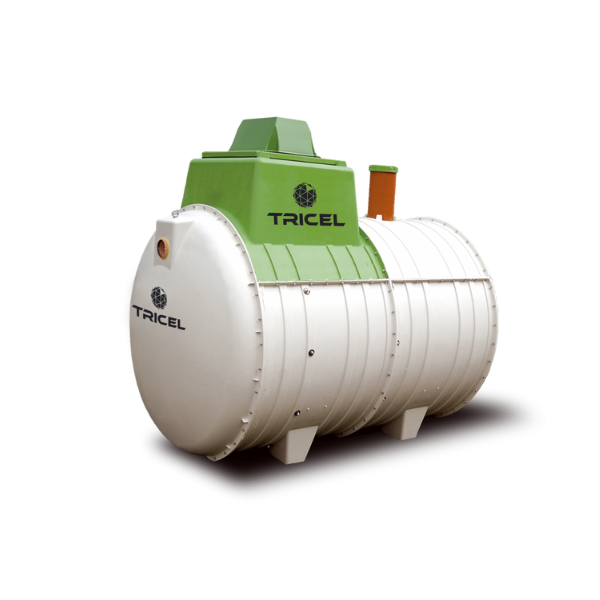
Tricel Novo Sewage Treatment Plant
Durable & long lasting SMC tank, shallow dig tank, easy installation (Plug and Play), long life components.
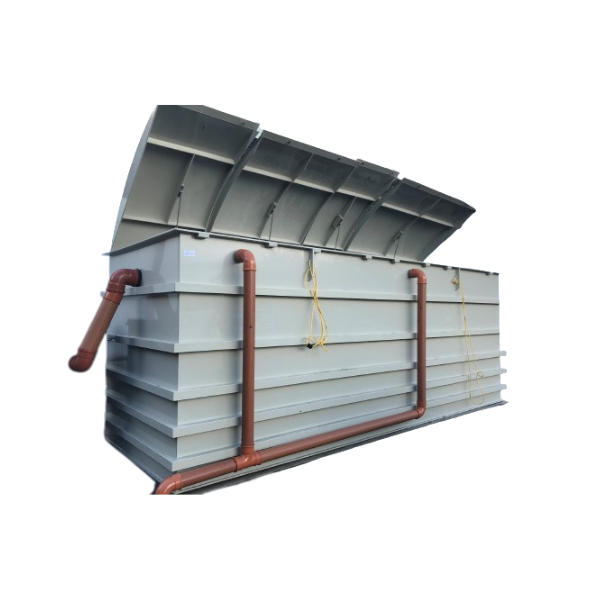
Tricel Maxus Sewage treatment Plant
Commercial plant. Submerged Aerated Filter (SAF) technology. Ideal for every project over 50 Population Equivalent.
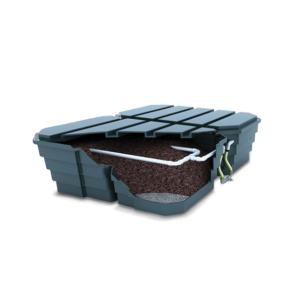
Tricel Puraflo Packaged filter
Ideal for sensitive sites, compliant to British Standard, small footprint.
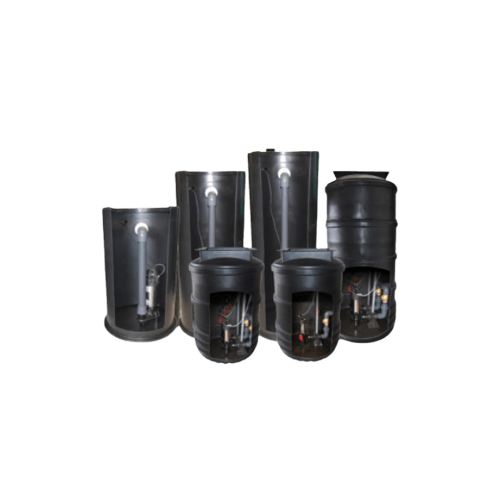
Tricel Pumping Stations
Pump fluids from one place to another where gravity drainage cannot be used, easy and trouble-free installation
MEET OUR TEAM
To find a technician in your area, visit our page
TALK SEWAGE TREATMENT
To speak to one of our agents online, click here
ASK FOR A QUOTE
Request a free quote today to have a quote that meets your project!
Key Features

Fast Delivery
Fast delivery + Rapid response to all our customers

Certified
Tricel Products are certified to EN12566-1 and EN 12566-3 certified

Technical expertise
Unrivalled technical expertise by our sales team regarding wastewater treatment solutions
Frequently Asked Questions
A cesspool is a simple storage vessel with an inlet and no outlet. It’s a sealed storage vessel; all the water coming in stays within the tank. The advantage is it doesn’t need an outlet. The disadvantages are: there is no treatment, the tanks are huge, and it needs regular emptying. Everything which has gone in must be sucked out. Ideal for sites which have got very infrequent use (Sheppard huts, for example).
A septic tank has an inlet and an outlet; it’s a simple overflow system. See how a septic tank works here. The advantages of the septic tank are there is no mechanic and no electricity requirement for it to work. The disadvantages are you are discharging dirty water, and untreated sewage effluent, as a tiny breakdown has occurred in the tank. You can only release water to a drainage field for the water to go through the subsoil to treat the water.
A sewage or package treatment plant has an inlet and an outlet; the wastewater is treated inside the tank. Aeration is provided inside the tank for the aerobic bacteria to feed on the waste and remove it from the liquid. The advantages are the wastewater is treated and can be discharged to a watercourse.
Many package treatment plants are available on the market:
- Trickles filters
- Rotating Biological Contactors (RBC)
- Mobile media bio-reactors
- Activated Sludge systems
- Sequence Batch Reactor systems (SBR)
- Fixed Bed Systems (like the Tricel Novo)
Domestic wastewater is all wastewater generated inside the house, including grey water from sinks, showers, baths and sewage from toilets. Rainwater is not classified as greywater and should be directed to a soakaway.
A trial hole can be dug during the site assessment and left open for 48 hours to determine this. The ground level is used to measure the water level.
After the water is discharged, it must flow into a drainage field or a running watercourse. It will fail and block up very quickly whenever it is released directly into the ground. It will also violate the government’s General Binding Rules for small sewage discharges—more information on this page.
Get in touch
